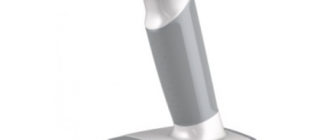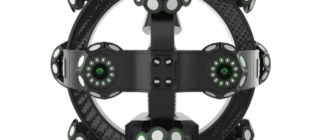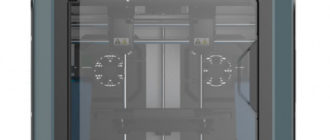Before launching a new product into production, most companies first test it. New technologies help to significantly reduce the cost and time required for this task. Often 3D prototyping is used for this purpose.
Prototyping in 3D printing
Making a working model is a complex process during which a sample product is created. It is suitable for evaluating functionality and properties, as well as for demonstrating to the target audience. It is done before the product is launched into mass production.

What is it?
Prototyping is the creation of a complete or partial model of a product that is being prepared for production.
How it works
Thanks to 3D prototyping technology, it is possible to significantly reduce the time it takes to create prototype models. This has allowed additive manufacturing to gain the status of a “bypass technology”.
The principle of the technology is to create a physical object based on a digital 3D model. First, a CAD model is created and then it is printed on a 3D printer.

Prototyping is most often done using inexpensive printers. But absolutely different materials can be used.
Applications
Prototyping is used in the following areas:
- production of piece products;
- Creation of building models in the construction sphere;
- Production of toys, souvenirs;
- manufacturing of exhibition samples of products;
- production of spare parts, etc.
In medicine and dentistry, prostheses, organ models, surgical instruments, and templates are printed on printers.
Prototype types
Prototypes are divided into the following types:
- Industrial. This type includes models of parts of various mechanisms and devices. Such 3D-prototypes have the highest demands on accuracy and quality.
- Commodity. Most often made in the form of a product or its packaging.
- Presentation. Used in design, construction and architecture. For instance, this could be a model of a building.
- Transport. A scale model of a car or some other vehicle is made.

Rapid prototyping technologies
There are such technologies of prototyping:
- Stereolithography (SLA). This technology uses liquid photopolymer with added reagents. The mixture is polymerized with an ultraviolet laser. Layers are created sequentially on a moving substrate.
- Selective laser sintering (SLS). The technology involves layer-by-layer production of a model using a powder. The material is distributed evenly on the plane, and then the individual sections are laser sintered. The powder material can be plastic, metal, glass, foundry wax or ceramics. Powder is applied to the work surface with a special roller.
- Multi-layer modeling (MJM). Devices for the application of this technology are developed by 3D System. The model is made according to the principle of standard inkjet printing. The material is fed through nozzles located on the print head. Consumables are preheated and then fed into the extruder, which prints layers of the part.
- Lamination (LOM). The method involves layer-by-layer bonding of films that are cut with a laser or a special blade.
- Layer-by-layer deposition (FDM). In this technology each layer is applied with melted material, which is extruded through a nozzle. Often some plastic is used for printing, but other materials such as metal can also be used. Objects created by this method have low quality, but it is the cheapest to implement.
Stages of prototyping 3D models
The prototyping process includes the following steps:
- First, a computer model of the future object is created.
- After that, a mock-up is made using 3D printing.
- The finished prototype is tested.
- If necessary, the product is refined and adjusted.
Modeling
3D modelling takes place on a computer using special software for engineering three-dimensional graphics. Drawings, sketches, graphs, blueprints and necessary technical documentation are used to create a model.

Master model making
After modeling, a master model is printed. A product layout is created, which should cover all basic needs.

The master model is tested for compliance with the requirements. This can be appearance, ergonomics, correctness of forms, etc. It all depends on the use of the future product.
Correction
If any inaccuracies or inconsistencies with the requirements were identified during testing, they are corrected in the computer model. After that, all the previous stages are repeated.
Creating a prototype
If the master model passes all the tests, a prototype is created. This is a fully functional product.

Requirements for Prototyping
A quality prototype must be:
- visual;
- accurate;
- functional.
Accuracy depends mainly on high-quality and professional 3D modeling.
SOFTWARE
The best software for prototyping:
- Wings 3D. This program refers to advanced tools for 3D modeling. With its help, you can create the most accurate models. Wings 3D has a customizable interface, and it can also save finished files in most 3D formats.
- Open SCAD. This is free 3D modeling software. Open SCAD is a 3D compiler that displays parts in three planes.
- AutoDesk 123D. The program has a huge set of tools for CAD and 3D modeling. It allows you to create projects and visualize almost any three-dimensional model.
- 3DReshaper. This is an accessible and fairly simple tool for modeling. The program is used in various fields such as art, construction, shipbuilding, mining, etc. 3DReshaper has built-in support for different textures and scripts, which greatly facilitates the process of 3D modeling.
- form-Z pro. A program that is great for furniture and house designers, as well as designers. Allows you to create objects of any complexity. The main feature of the program is the possibility of structured modeling for the processing of unique forms. The construction of objects is based on a grid, which remains parametric when compressed and stretched. This greatly simplifies adjustments.
The use of 3D printing in prototyping has greatly reduced the cost and time of work. The right type of technology can be selected for any area to make the production process faster, more efficient and reliable.







